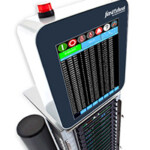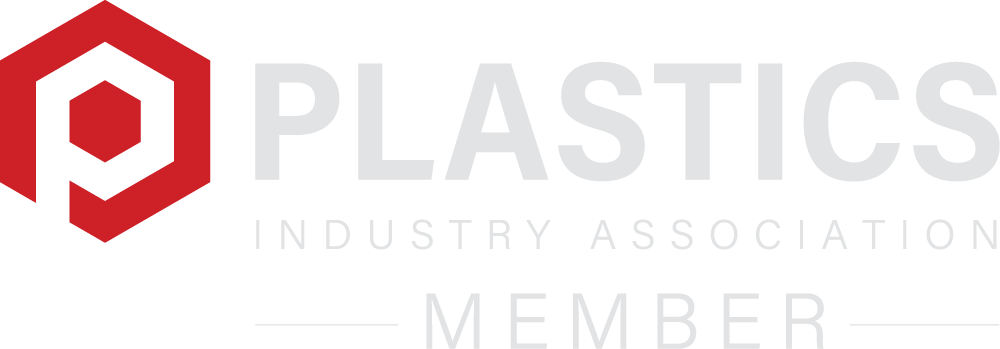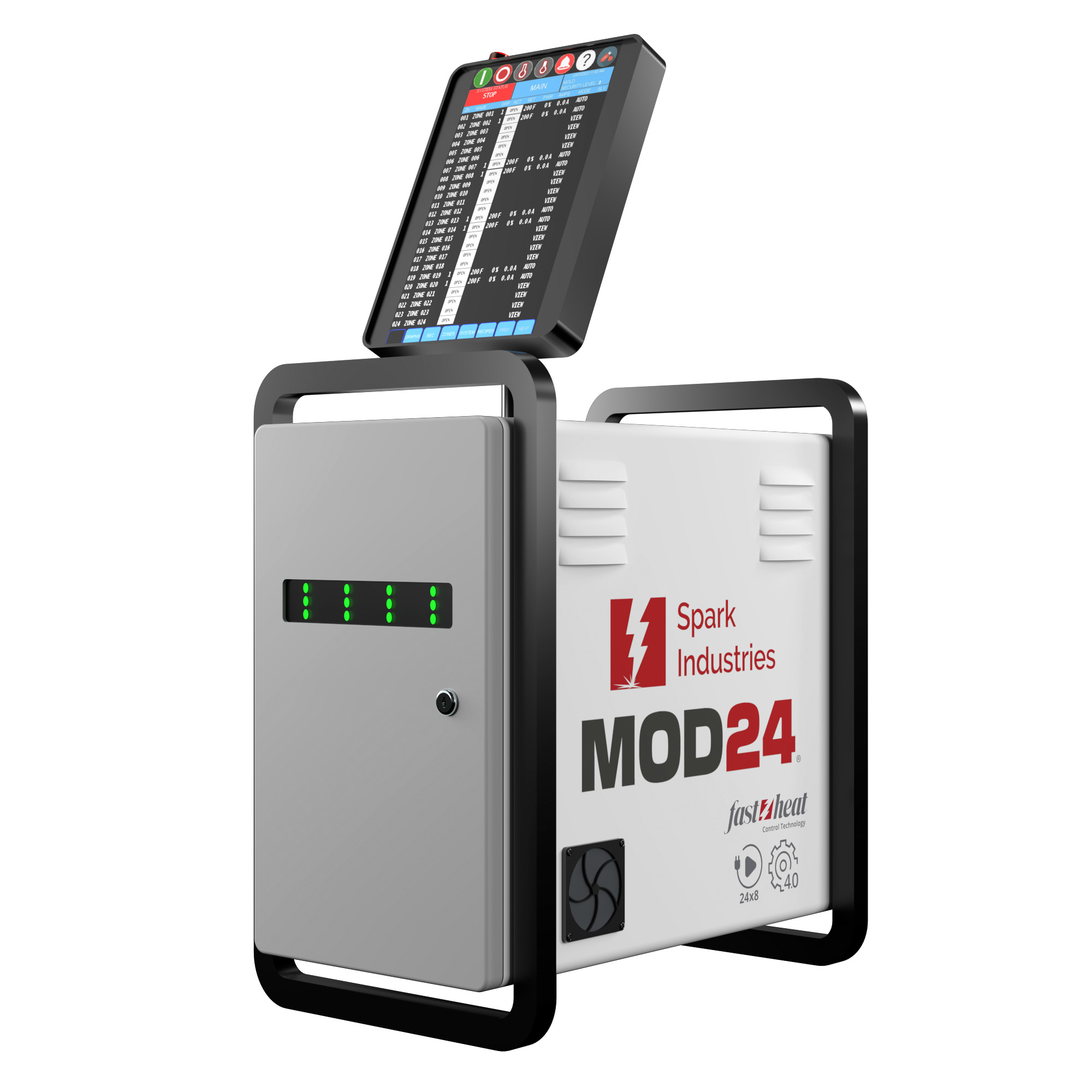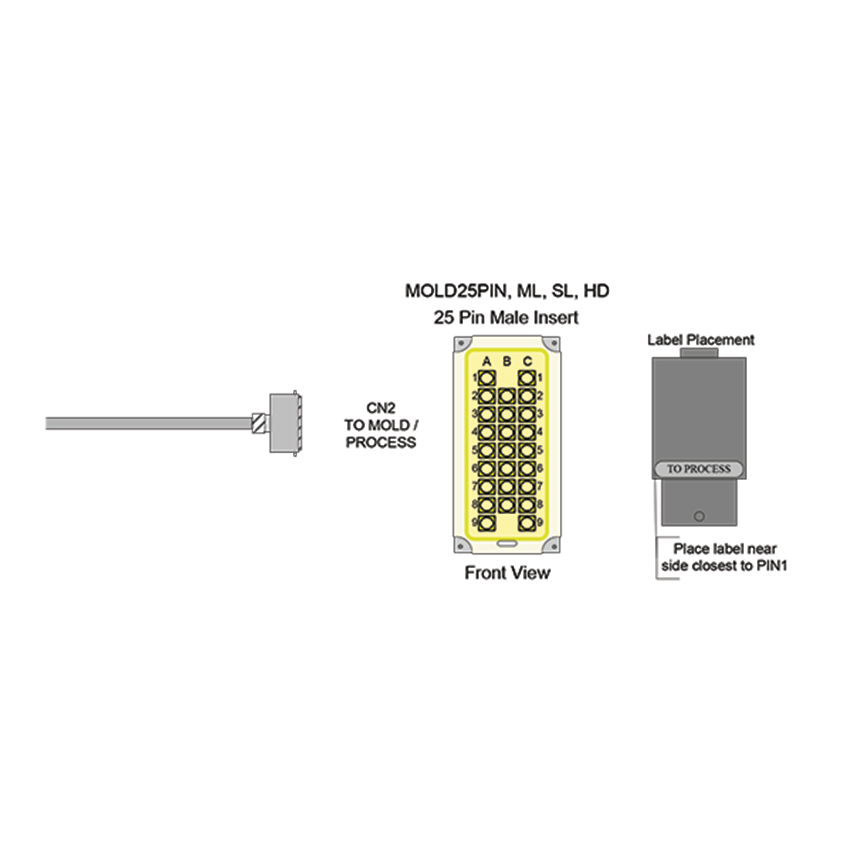Pulse technology demonstrates enhanced ergonomic features for accurate and reliable hot runner temperature controllers
Catchy intro…
Well, we don’t really have one. But to be straightforward…Fast Heat Inc. by Spark Industries is simply the apex of the industry when it comes to reliable hot runner temperature controllers.
Gear like the (showcased at Amerimold 2021 exhibit) Pulse reliable hot runner temperature controllers protect heaters and thermocouples. Furthermore, they prevent operator error and allow users to specify production cycles. It’s hard to beat Fast Heat when it comes to considering the customer and how the operator uses the injection molding machinery.
Plus, Fast Heat’s proprietary Mold and Cable Checker tools complement Pulse controllers. These diagnose hot-half and cable issues. That’s a lot of indispensable assistance in the world of plastic injection molding machinery.
Yes, this equipment is indispensable for plastic injection molding…but, consider what goes into the design of equipment like the reliable hot runner temperature controllers.
Reliability? Sure… Functionality? Of course… Profitability factors…uh, yes!
Well, how about ergonomics? It isn’t something that you consider until you actually are the one using the equipment. But this certainly is a consideration when you stand there on the production floor for your shift.
Ultimately, we want humans to use the equipment without difficulty. You want efficiency and the best results possible.
Why Ergonomics?
The term ergonomics is tossed around a lot and we have a general idea of what it means. “But, what exactly is ergonomics?” you ask. It is the study of people’s efficiency in their working environment. As defined by Webster’s Dictionary. Further, it is explained by Ergo-Plus as:
Ergonomics (or human factors) is the scientific discipline concerned with the understanding of interactions among humans and other elements of a system. Additionally, it is the profession that applies theory, principles, data and methods to design in order to optimize human well-being and overall system performance.
Moreover, the word ergonomics comes from the Greek word “ergon” which means work and “nomos” which means laws. It’s essentially the “laws of work” or “science of work”. Good ergonomic design creates the optimal work environment.
Consequently, there are extreme adverse results of using tools, equipment or doing work of any sort without taking into consideration the best ergonomic practices and situations.
Most of us are likely familiar with some of these negative outcomes listed by OSHA:
- Carpal tunnel syndrome
- Tendinitis
- Rotator cuff injuries (affects the shoulder)
- Epicondylitis (affects the elbow)
- Trigger finger
- Muscle strains and low back injuries
- Musculoskeletal disorders (MSDs)affect the muscles, nerves, blood vessels, ligaments and tendons. Workers in many different industries and occupations are exposed to risk factors at work, such as lifting heavy items, bending, reaching overhead, pushing and pulling heavy loads, working in awkward body postures and performing the same or similar tasks repetitively. Exposure to these known risk factors for MSDs increases a worker’s risk of injury.
None of these things are good!
As a result, your success needs a piece of equipment that is easy to use in functionality and in the actual kinesiology or physiological requirements. So, that’s what as provided by Fast Heat with their Pulse controller.
Enhanced Features for Reliable Hot Runner Temperature Controllers
When Spark Industries purchased the injection molding product line of Fast Heat Inc., which includes hot runner controls and diagnostics products on the market for up to 20 years, Spark made some big changes for the good. Faster responses, lead times, product updates, new products, and competitive pricing now exist.
HMI
In addition, when it comes to customer satisfaction and better user experiences, the new HMI plays a predominant role. Spark completed an engineering project developing the new high-resolution touchscreen HMI to replace the original display. Reliable Hot Runner Temperature Controllers win!
Firstly, Pulse hot runner temperature controllers let users control anywhere from two to 180 zones for high-cavitation applications, and offer a variety of capabilities. In fact, one function automatically removes moisture from heaters preventing shorts.
Additionally, the new HMI offers plug-and-play simplicity and modernized specifications used with older Pulse controllers. It features a 10.1-inch LCD screen and has an ethernet port for Virtual Network Computing functionality and a USB port that saves screenshots. It comes with a two-year warranty from Spark Industries.
A new human-machine interface (HMI) touchscreen for backward compatible updates is now available for Pulse controllers. And advanced technology provides for new orders. A simple color display adds ease of use.. It also features a 10.1-inch LCD screen, an ethernet port for Virtual Network Computing functionality and a USB port to save screenshots. Also, It comes with a two-year warranty from Spark Industries.
Benefits of the display:
- Simply plug it in, turn it on, set/select recipe and run.
- Bake-Out automatically bakes out moisture from heaters to prevent shorts.
- Easily see alarms, including temperature, amperage, percent power, thermocouple conditions and heater conditions.
- Thermocouple designations are reassigned if there is a mis-wire in the hot runner junction box.
- Boost or Idle with one button.
A comprehensive list of advantageous features are found here:
Human Machine Interface (or Interaction) is probably not a term that you hear on a daily…well, not yet! This communication term will continue to be more common place in every facet of life, guaranteed. It’s a good thing to know that Fast Heat is on top of these advances.
Accuracy
Further, Fast Heat’s Pulse technology is said to be extremely accurate, with a constant-tuning PID algorithm, 50 msec sampling rate and 8.33 msec power increments preventing scrap and enabling tight processing windows. Embedded software and industrial-grade components ensure long-lasting reliability, a simple color display promotes easy use and a VNC Viewer permits remote monitoring or creating/editing recipes.
Pulse also offers users ATP (Active Thermocouple Protection), which automatically protects thermocouples from short circuit current leakage while improving thermocouple signal accuracy. Waterfall Technology reduces peak KWh consumption. I/O, an optional feature on Pulse is said to be great for IMM and other integrations for At-Temp Signal, Inputs for Run, Stop, Boost, Idle and Outputs for all Alarms.
The CPU module controls all of the Pulse’s and Display Unit’s main functions. It is modular and easily removable in case of a problem. The CPU module can only be inserted in slot 1 of the Pulse cabinet.
There are 5 status lights on the CPU module which indicate the status of the Pulse system and module itself:
CPU WATCHDOG LED 1 (green): ON = indicates the CPU watchdog is operating properly
Blinking = indicates the CPU watchdog is being reset
MICRO FUNCTION LED 2 (green): ON (Fast Blinking) = indicates the module is functioning properly
ON (Does Not Blink) = indicates microprocessor has failed
OFF or Slow Blinking = indicates failure in CPU module + 12V POWER SUPPLY UNIT LED 3 (red): ON = power supply is missing
OFF = power supply is present + 24V POWER SUPPLY UNIT LED 4 (red):
ON = power supply is missing
OFF = power supply is present – 12V POWER SUPPLY UNIT LED 5 (red):
ON = power supply is missing
OFF = power supply is present
That is as uncomplicated as we could hope for, isn’t it?
Finally, considering how the human-machine interface can affect your staff and your resulting products, you understand how Fast Heat easily becomes who you will want to do business. Choosing the right injection molding machinery and equipment is as important as choosing the right employees; the two must work together for success.





